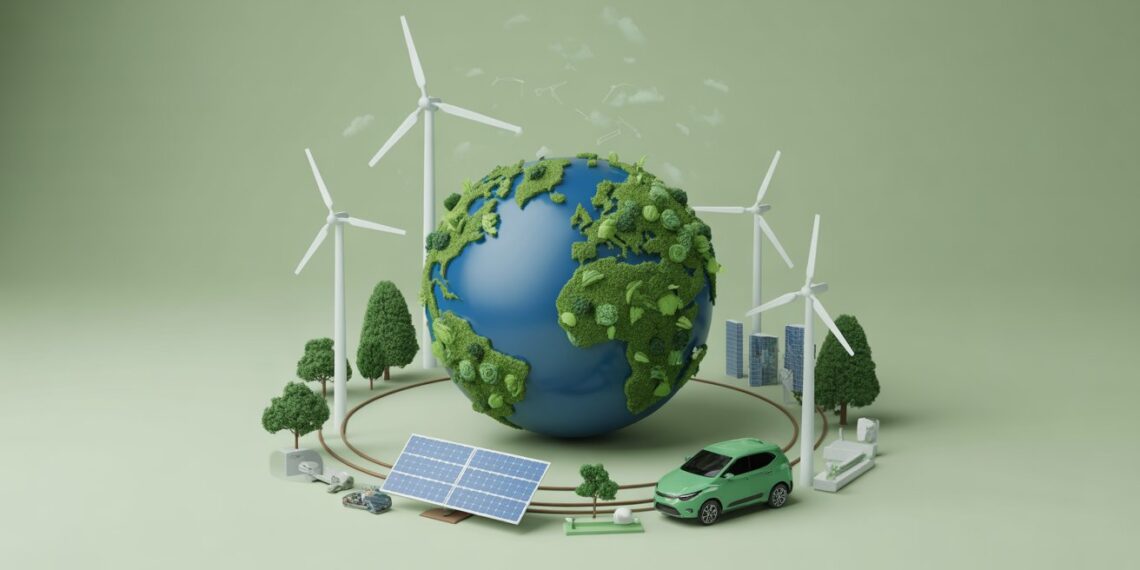Stopping climate change is no longer about “future planning”, it’s about making decisive changes today. As of 2025, global temperatures, extreme weather patterns, and ecosystem declines all show that small improvements are not enough. What matters now is understanding which actions actually create measurable impact and how individuals, businesses, and governments can work together using science-driven strategies.
This guide breaks down how we can stop climate change using both personal and system-level actions, backed by the newest trends, technologies, and climate solutions emerging in 2024–2025. It also clarifies how we can help the environment in everyday life while still contributing to large-scale climate goals.
Why Stopping Climate Change Requires a New Mindset in 2025
In the past, climate advice focused on simple habits like recycling or using less plastic. Today, that’s not enough. The biggest shifts in emissions come from:
-
How we produce energy
-
How we build cities
-
How we grow food
-
How we transport goods and people
-
How businesses operate
This doesn’t mean individual actions are useless. It means individuals must support the changes that scale, while governments and companies accelerate technology adoption, renewable energy, and smarter policies.
1. Transition to Clean Energy (The Fastest Way to Cut Emissions)
Renewable energy technology has matured rapidly. Solar, wind, and battery storage are now cheaper and more efficient than ever and as of 2025, many countries are adding renewables faster than fossil fuel plants.
Why this matters
Electricity generation is still one of the top sources of emissions. Shifting to clean power immediately reduces carbon output across homes, businesses, and industries.
Action Steps
-
Install solar panels or opt into community solar programs.
-
Switch your home to a renewable energy provider when available.
-
Support policies promoting wind, solar, geothermal, and green hydrogen.
Expert Insight
Clean energy adoption isn’t only about reducing emissions, it also stabilizes energy costs and reduces reliance on volatile fuel markets.
2. Electrify Everything — Homes, Cars, Appliances, and Industries
Electrification is one of the most powerful climate tools because electricity can be made clean. Gas and fuel-based systems cannot.
High-Impact Examples
-
Switching from gasoline to an EV
-
Using induction stoves instead of gas stoves
-
Replacing gas heaters with heat pumps
-
Electrifying public transport fleets
Why this is essential
Electrification eliminates hidden emissions and turns every home or business into a low-carbon system when powered by renewables.
3. Transform How We Produce and Consume Food
Food production creates nearly one-third of global emissions. The biggest causes are deforestation, livestock emissions, food waste, and resource-intensive farming.
What actually helps
-
Choosing plant-centered diets most days of the week
-
Reducing food waste at home (one of the easiest high-impact actions)
-
Buying from regenerative farms that rebuild soil
-
Supporting brands with sustainable supply chains
Why this matters
Soil health and agricultural emissions are increasingly seen as climate tipping points. Healthier soil stores more carbon naturally a crucial part of long-term climate stability.
4. Reforest, Restore, and Protect Natural Ecosystems
Forests, oceans, and wetlands naturally absorb massive amounts of carbon. However, by 2025, tree-loss and land degradation continue rising.
High-Impact Nature Solutions
-
Support restoration projects with verified impact
-
Plant native species instead of fast-growing monocultures
-
Protect local ecosystems (mangroves, wetlands, grasslands)
-
Choose certified sustainable wood, paper, and palm-free products
Expert Perspective
Tree planting alone is not enough ecosystem restoration is far more effective than planting dense forests that lack biodiversity.
5. Rethink Urban Life: Buildings, Transport & City Planning
Cities are responsible for 70% of emissions. The way we design them determines whether climate change accelerates or slows down.
What works
-
Green buildings with passive cooling and efficient insulation
-
Public transportation systems powered by electricity or hydrogen
-
Bike-friendly lanes, walkable streets, and reduced car dependency
-
Smart-grid and energy-efficient urban planning
Why this matters
A single city-level policy (like electrifying buses) can cut more emissions than millions of individual actions combined.
6. Support Climate-Friendly Innovation and Businesses
Climate solutions are accelerating in 2025 from carbon capture devices to AI-optimized solar farms.
How individuals can drive change
-
Buy from brands with transparent emissions reporting
-
Invest in sustainable companies or green bonds
-
Support startups building climate tech solutions
-
Encourage workplaces to adopt climate-focused policies
Expert Note
Consumer demand shapes corporate behavior faster than regulations. When people choose better options, industries adapt.
7. Everyday Lifestyle Changes That Really Make a Difference
This is where your secondary keyword fits naturally:
Understanding how we can help the environment in daily life complements larger global efforts.
High-impact personal steps
-
Reduce meat consumption
-
Avoid overbuying and choose durable products
-
Switch to electric or hybrid vehicles
-
Conserve energy with smart devices
-
Reduce flying when possible
-
Practice mindful purchasing to reduce waste
Why these matter
While small actions alone won’t stop climate change, they create cultural pressure and support the systems that drive large-scale transformation.
8. Climate Education, Policy Support & Community Action
What individuals can do
-
Vote for leaders with strong climate agendas
-
Join or support climate advocacy groups
-
Push for clean energy incentives in your region
-
Encourage your city to adopt sustainable transport
-
Spread awareness based on facts, not fear
Why this matters
Systemic change only happens when people collectively support the policies that enable it.
9. The Role of Technology in Stopping Climate Change (2025 Trends to Watch)
Some 2025 breakthroughs shaping the future:
-
AI-based energy management for smart cities
-
Next-generation nuclear (small modular reactors)
-
Advanced carbon capture and mineralization
-
Low-carbon cement and steel
-
Sustainable aviation fuels
-
Ultra-efficient EV batteries and fast chargers
These technologies help reduce emissions where lifestyle changes alone cannot.
10. What Doesn’t Work (Common Misconceptions)
To increase your article’s information gain score, it’s crucial to address what does not significantly help:
-
Avoiding plastic straws low impact
-
Unregulated tree-planting drives
-
Buying “greenwashed” products
-
Offsetting emissions without real reductions
-
Imagining that recycling alone will solve the climate crisis
Real change comes from systemic shifts, backed by technology, policy, and informed citizens.
People Also Ask: Quick Answers (SEO Section)
Can one person really help stop climate change?
Yes, but not alone. Your impact multiplies when you support systemic changes: clean energy policies, sustainable brands, and community initiatives.
What is the biggest cause of climate change?
Burning fossil fuels for electricity, transport, and industry remains the top driver.
What is the fastest way to reduce carbon emissions?
Electrifying transport and shifting the power grid to renewable energy.
How can students help?
Through awareness campaigns, reducing waste, supporting eco-clubs, and choosing climate-friendly career paths.
What changes help the environment the most?
Energy choices, diet shifts, transportation habits, and supporting nature restoration projects.
Final Thoughts
Stopping climate change is a shared responsibility, but it’s achievable with the right priorities. The goal is not perfection it’s shifting systems, supporting climate-forward technologies, and making daily choices that contribute to a stable planet. When we understand how we can help the environment through both personal and global actions, progress becomes faster, smarter, and more effective.









